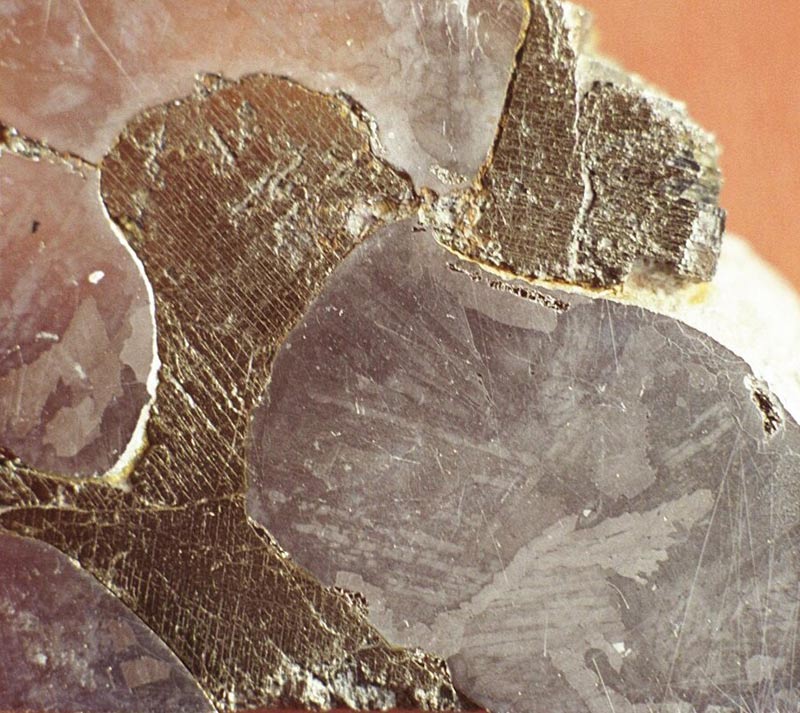troilite

Polished and etched surface of the Mundrabilla meteorite from Australia. The darker brownish areas with striations are troilite with exolved daubréelite.
Troilite is a non-magnetic form of iron sulfide (FeS), often found in association with other sulfide minerals, such as pyrrhotite and pentlandite. It is a common mineral in many types of meteorites, including chondrites, the commonest type of meteorite. Troilite is often found in small grains that are dispersed throughout the meteorite can provide important information about the meteorite's formation and history.
Troilite can serve as a geothermometer – a tool by which scientists can determine the temperature at which a mineral formed. This is because the ratio of two isotopes of sulfur in troilite is sensitive to temperature. Since troilite is believed to have formed in the early solar nebula, studying the isotopes and other characteristics of the mineral can provide information about conditions in the early solar nebula and how the planets and other objects in the Solar System formed.
In addition to its scientific significance, troilite is also a beautiful mineral, often displaying metallic gray or bronze-colored crystals. Troilite crystals are found in a variety of shapes and sizes, and can be quite intricate and detailed.


